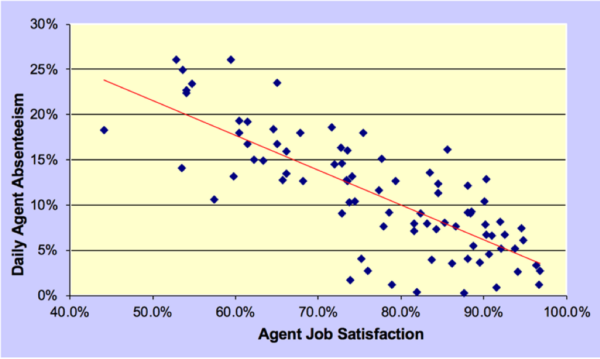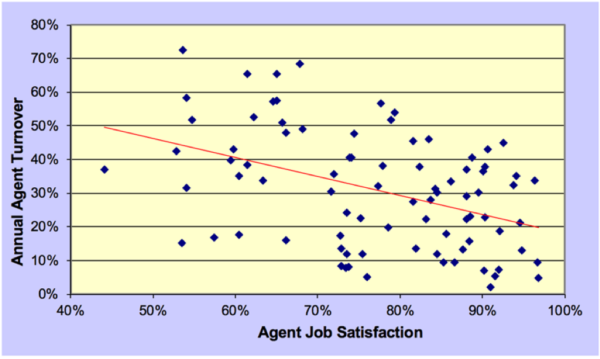
Pexels / Pixabay
The room is dimly lit, tightly packed, and windowless. The air seems tense. It’s hard to hear above the clatter of keyboards and phones ringing off the hook. Agents juggle phone calls, quickly type out emails and talk down angry callers. We’ve seen the typical call center in TV shows or in movies. This scene makes for good drama, but today contact centers look different.
Contact centers have a tendency to get stuck in the past, caught in a time capsule with outdated technology, rules and KPIs that grip to the exact reputation they’re trying to shake.
With the COVID-19 pandemic, companies are forced to make changes to support better work from home conditions. When stay-at-home orders started, about 74% of companies moved their contact center agents to home offices. That’s up from 59% pre-pandemic.
What’s more, it’s predicted that moving forward, over 70% of companies will continue to have agents work from home. Contact centers are no longer confined to those windowless rooms with cubicles. They’re no longer bound by the same geographic restrictions. With the rise in virtual and cloud contact centers, we’re seeing more companies managing agents who work in separate buildings, cities, states, or even countries.
More than ever before, virtual contact centers are worth the investment. Not only are they saving costs for your company by eliminating office space, but they may be the best option you can provide for your employees.
Why it’s Worth Your Time to Focus on Your Agents
Your agents spend hours a day dealing with generally grouchy, sometimes abusive customers. Maybe you’ve unconsciously added to that pressure with unattainable KPIs and slow technology. It’s not a shock that turnover rates in contact centers hover between 30-45%.
Agent job satisfaction is central to your other primary metrics in your call center. It has potential to drive everything else. AX is positively correlated with customer satisfaction and negatively associated with absenteeism and turnover, meaning that absenteeism and turnover go down as agent job satisfaction goes up.


Since improvements in agent job satisfaction can reduce agent turnover and absenteeism, it can also reduce the costs associated with turnover and absenteeism.
In North America, the direct cost of replacing a contact center agent, including the cost of screening, recruiting, interviewing, and training an agent is more than $ 12,000. Then, add on the loss of valuable knowledge and expertise that occurs every time an agent leaves your contact center.
Prioritizing the satisfaction of your employees saves you money. But, it also drives employee retention, engagement, and ultimately the experience of your customers.
So, how do you drive agent satisfaction?
As your leadership team debates the future of remote and flexible work, consider pairing better technology with flexible work conditions to set your contact center on a path to higher productivity and satisfaction.
The Undeniable Benefits of Flexible Work
1. Increased Employee Productivity:
Believe it or not, it’s hard to find evidence that flexible working conditions are less productive than on-premise offices. It may be hard as a manager to relinquish the control and oversight you have in a typical office environment. But, when you take your call center virtual, you enable your agents to operate in an environment that best suits their personal working styles.
Studies have shown that flexible work arrangements encourage greater productivity. In an experiment run by the Chinese Travel Agency CTrip, remote work boosted their overall productivity.
Allowing their call center agents to work from home led to a 13% performance increase. About 9% of that increase was from working more minutes per shift (due to fewer breaks and sick-days), and 4% of the increase was from more calls per minute (due to a quieter working environment).
Our clients put this theory to the test with their own agents, too. And, many found an increase in productivity and customer outcomes once sending their teams home in March. In fact, our friends over at Blackhawk Network saw a 4% reduction in handle times in a few short weeks.
2. Increased Employee Wellness:
Give agents the option to work where they feel comfortable and balance their own priorities to see an increase in overall wellness. One primary benefit of flexible work is no commute! This has a direct impact on employee wellness. It’s no secret that the time it takes to travel to a job is a huge opportunity cost.
Americans alone spend almost two trillion minutes a year, collectively, traveling to and from work. Considering that the USA only makes up 4% of the global population, it’s clear that commuting sucks the life out of the world’s economy.
And that’s just considering the time! The secondary effects, such as stress, pollution, and infrastructure costs, are mind-blowing. Working from home instantly eliminates the vast majority of those problems for each worker who does it. Without a commute, employees have more time to spend with family and to care for themselves.
Without the distractions in an office, your staff have the space to work through more challenging mental tasks. By working from home, your agents have more time for exercise and will be more likely to eat home-prepared meals. And, they have more time and flexibility to engage in hobbies and educational or charitable pursuits.
Flexible work presents more opportunity and time to care for your overall well-being so your agents can be their best selves when they get online for work.
3. Increased Access to the Best Talent Available:
Moving to sustainable, virtual contact centers opens the door for a significantly larger pool of talent. Think first of the potential local talent that is held back from working in a traditional office setting. For parents of young children, the elderly, and the disabled, it’s often a lot harder to leave the home for work, travel long distances and deal with the stress of office work.
Being free to work from the quiet comfort of their own homes helps them to preserve their independence. You can tap into a pool of talent that otherwise wasn’t available to you. Then consider if you open up your flexible or virtual work outside your geographic location.
When hiring at-home call center agents, your labor pool widens beyond the geographic constraints of an office, so you can find top talent with unique skill sets anywhere. Discover new talent with a wider range in education, experience and unique cultural skills.
This liberates the recruiting process and lets you get more selective when hiring employees. With a strong team of employees, you can get more done and improve your brand.
Plus, your entire team benefits from having employees who are driven and engaged in work for the long haul.
Better Agent Experience Drives a Better Customer Experience
Nemertes conducted a recent study in light of COVID-19. For call centers, they found that the biggest drivers for keeping agents at home include the following:
- improving agent quality of life (57%);
- preparing the company for future disasters (46%); and
- better for the environment (36%).
See the top bullet point?
Almost 60% of employers are considering remaining virtual because their agents are experiencing a better quality of life. Perhaps movement to flexible work is doing more to increase agent job satisfaction than can be solved with a pizza party or a team retreat.
Investing in flexible working environments and the tools that support them shows your employees you care about their longevity and well-being. The intentional focus on the needs of your agents is what starts to mend the gaps in the agent experience. And in turn, has a positive effect on your customer’s experience
Gartner has found that 86% of executives rank employee engagement and experience as the number one factor in delivering consistent and positive CX.
We saw this firsthand with one of our customers, onPeak, a Chicago-based company that provides accommodations for the events industry. onPeak went through a merger and found themselves with employees spread across multiple locations. Their legacy contact center platform couldn’t support the new crop of remote team members in a sustainable way. So, they switched to Sharpen’s cloud-native contact center platform to make work easier for their agents.
“We’re all about quality of service, but we also believe our frontline agents must be happy to provide that,” said onPeak’s Senior Director of Operations, John Hunt. This focus on employees translated to a better agent experience and better metrics for onPeak.
“Sharpen enabled us to quickly and cost-effectively support work-at-home agents, which has improved the quality of their lives. They no longer have to fight traffic and pay commuting costs. This has left them with more time for their families, which supports our ‘family first’ policy.” Hunt added. “What’s more, agent sick time has dropped by about 65%.”
Invest in your agents and prioritize their well-being by providing flexible work. Then, support them with the right technology and proactive management, and you’ll see benefits that reach your customers and your business. When your team is debating next steps this year, consider accommodating the needs of your agents through virtual contact centers, and reap the benefits.
Business & Finance Articles on Business 2 Community
(49)
Report Post






